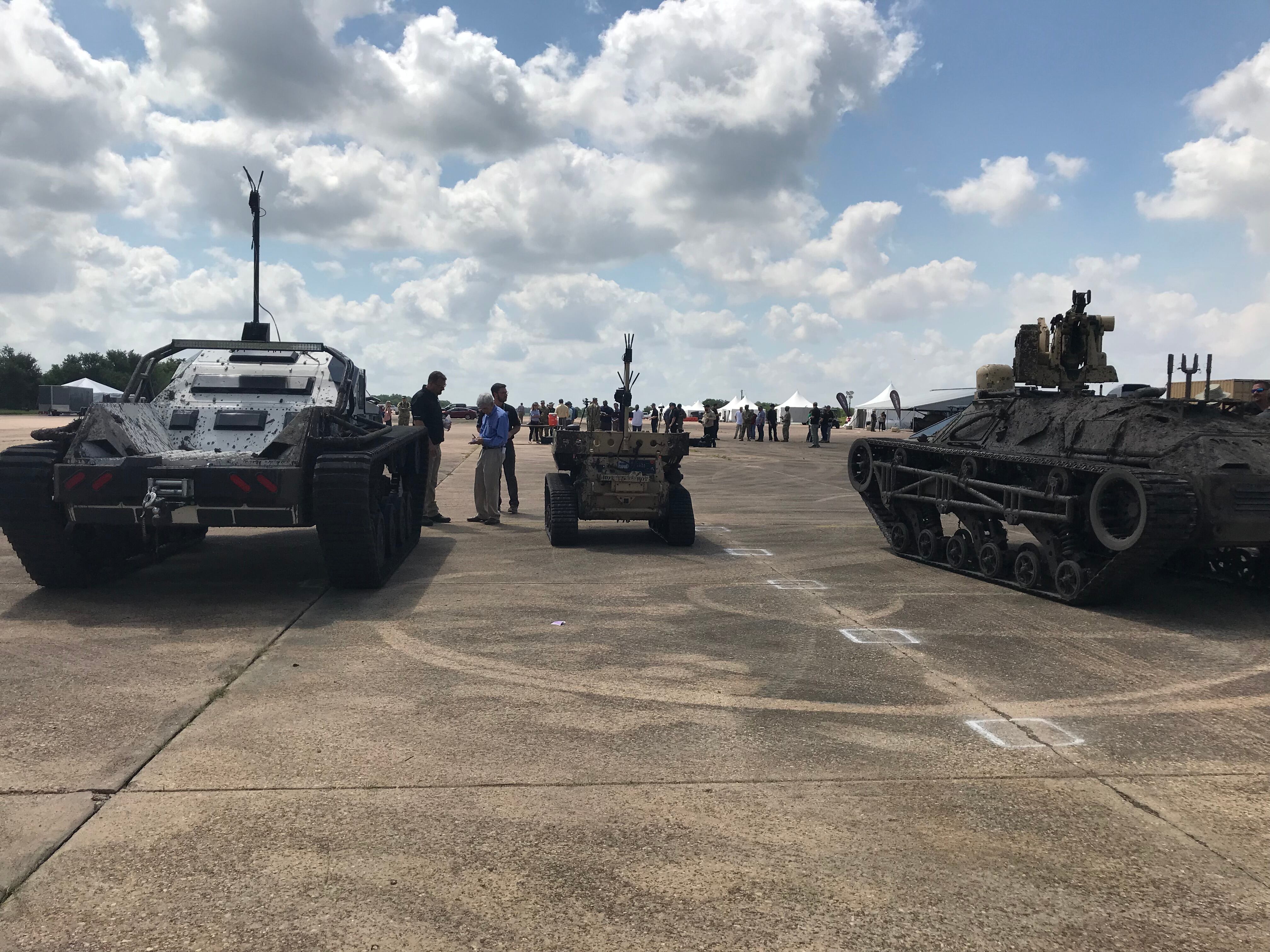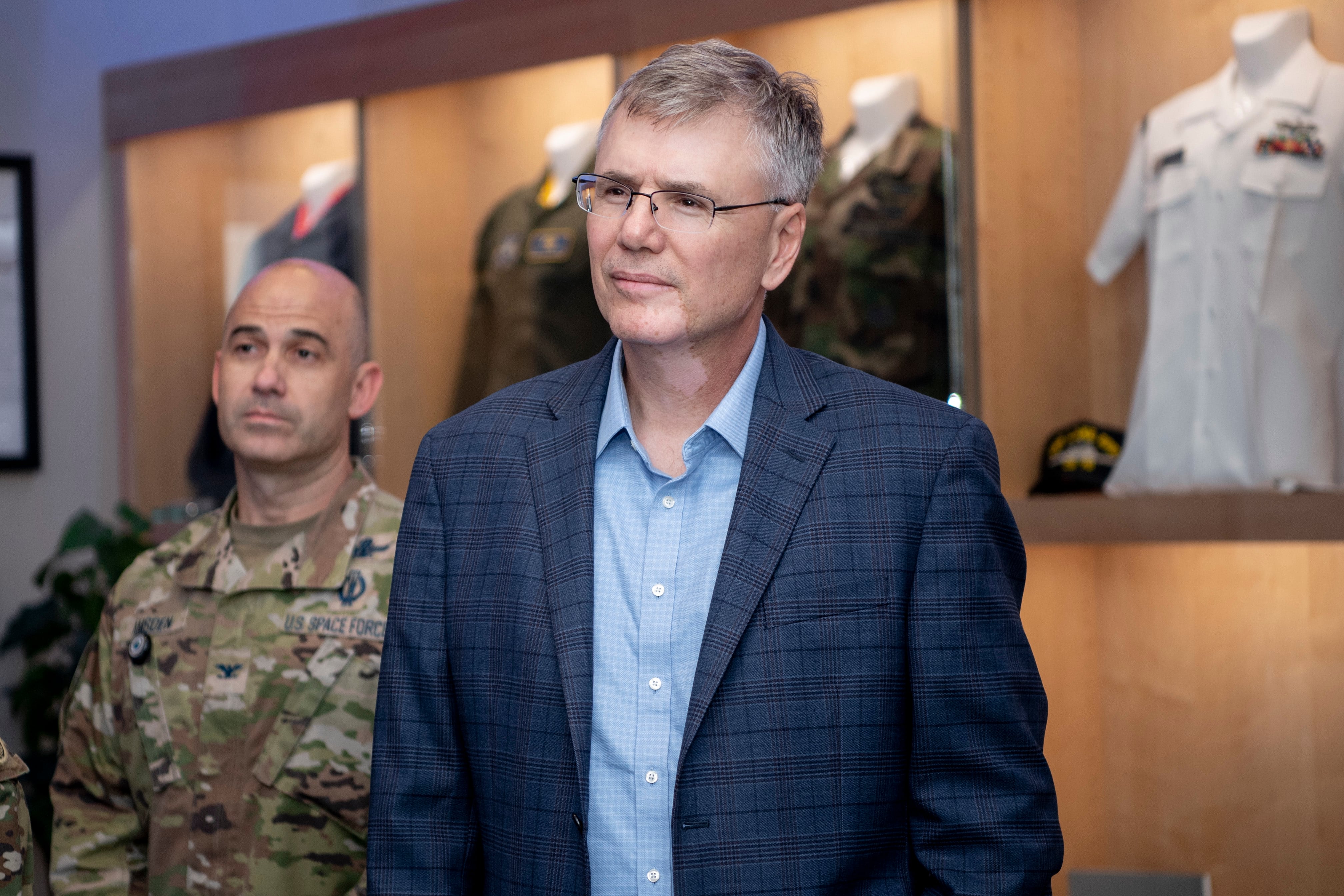WASHINGTON — A demonstration in Texas this month is setting the U.S. Army’s expectations ahead of a major prototyping competition for robotic combat vehicles.
The Army has acquired a number of ground robots to give it an edge in Iraq and Afghanistan, but as it looks beyond war in the Middle East to possible conflict with peer adversaries, it’s reviewing its modernization efforts surrounding robotic combat vehicles. Those RCVs are likely to look different than what’s previously appeared on the battlefield.
Army Futures Command’s Next-Generation Combat Vehicle Cross-Functional Team, or NGCV CFT, is tasked to rapidly prototype new manned and unmanned vehicles suited for operations against near-peer adversaries. Those vehicles would need to handle the beatings that come with operating on the front line while keeping up with the maneuver force.
The Combat Capabilities Development Center’s Ground Vehicle Systems Center (CCDC GVSC) is working with the NGCV CFT to harness what industry has to offer and identify the Army’s future requirements for a light-, medium- and heavy-weight robotic combat vehicle.
RELATED
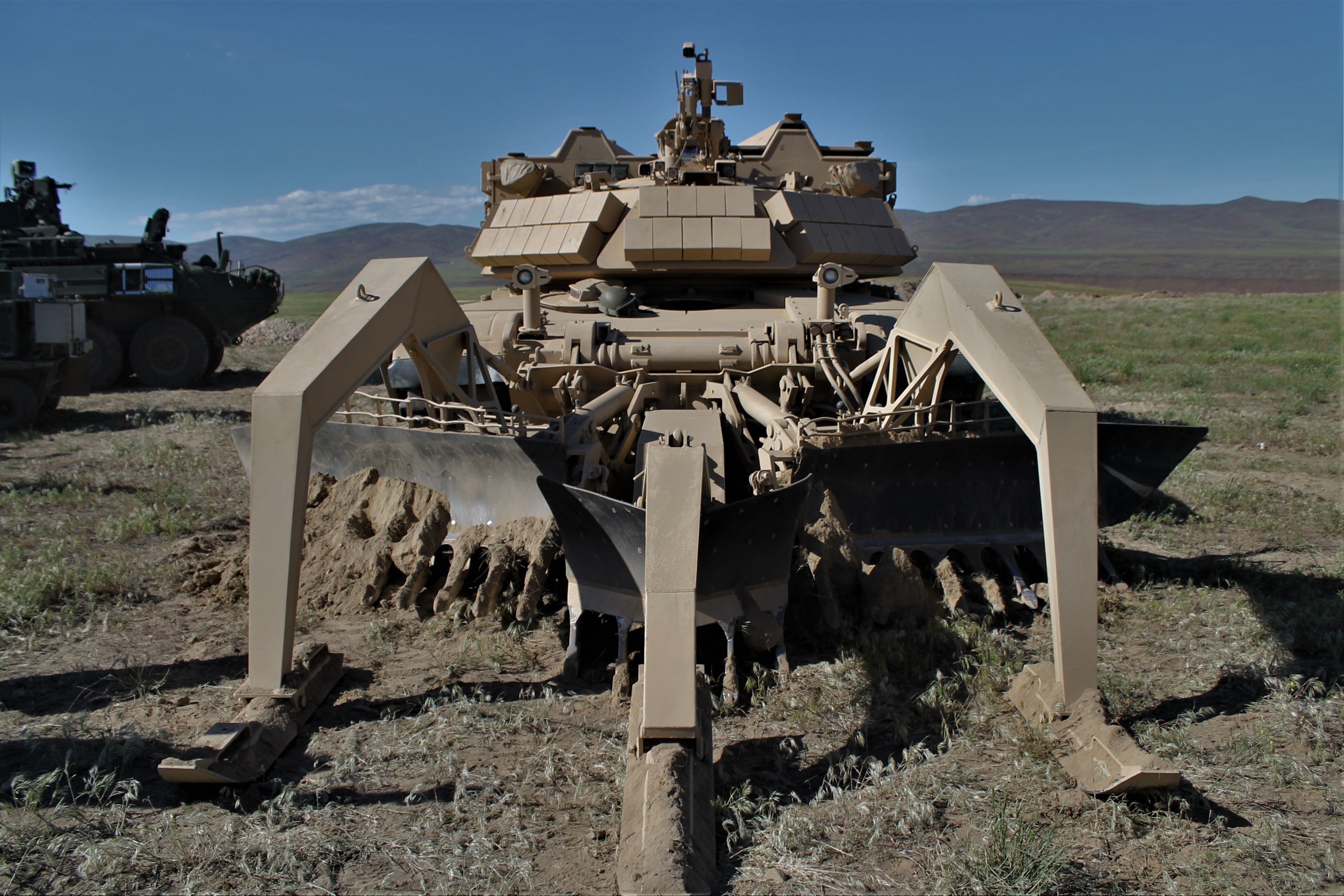
Who was at the competition?
The week-long demonstration, from May 13-17, was organized by CCDC GVSC and the National Advanced Military Consortium.
Six teams with a total of eight vehicles descended on a course on the Texas A&M University, RELLIS campus as the Army prepares to release a request for whitepapers, followed by a request for prototype proposals, Kevin Mills, the Army CCDC GVSC’s associate director for ground vehicle robotics, told Defense News in an interview.
The competitors are:
- A Polaris, Applied Research Associates and Neya Systems team
- A Textron and Howe & Howe team
- Pratt & Miller
- HDT Expeditionary Systems
- AM General
- QinetiQ North America
Pratt & Miller as well as the Textron and Howe & Howe team each brought two systems.
Three out of the four platforms under consideration for the Squad Multipurpose Equipment Transport (SMET) competition participated in demonstrations. They included vehicles from HDT, Polaris, and Howe & Howe.
AM General and QinetiQ both had vehicles in the running for the SMET program prior to the downselect.
The Army kept the demonstration requirements broad: “Basically the go/no-go threshold requirement was the vehicle has to be a robot. You have to have the ability for it to be controlled remotely,” Mills said.
The focus of the demonstration was on small and medium platforms, as the service is already preparing to use robot versions of the M113 armored personnel carrier to evaluate large ground robotic capabilities. That effort will focus on manned-unmanned teaming in a robotic wingman formation, with a manned Bradley Infantry Fighting Vehicle serving as the platform for the robotics operators.
The Army wants a light and medium RCV in fiscal 2020, and it plans to build four platoons worth — two of each — to demonstrate capabilities, Mills said. The focus across all three weight classes is on the chassis rather than the vehicle as a whole. The idea is to integrate mission systems onto a common chassis for each weight class.
Another requirement for RCVs under evaluation, Mills said, is the ability to carry at least 1,000 pounds for a light vehicle and at least 4,000 pounds for a medium variant.
“What turned up was a nice selection of platforms,” said Mills, adding that they ranged from traditional four-wheel platforms to tracked, multi-wheel variants to tweels, which have airless tires.
Despite the simplicity of the requirements, participants brought a variety of sensors and weapon systems on the platforms.
“Pretty much every one of them did something with their platform,” Mills said. “They had one or two things that they wanted to highlight” from sensors for targeting to pairing unmanned aircraft systems (either tethered or untethered) to weapons integration such as tube-launched unmanned vehicle missile systems, he added.
RELATED
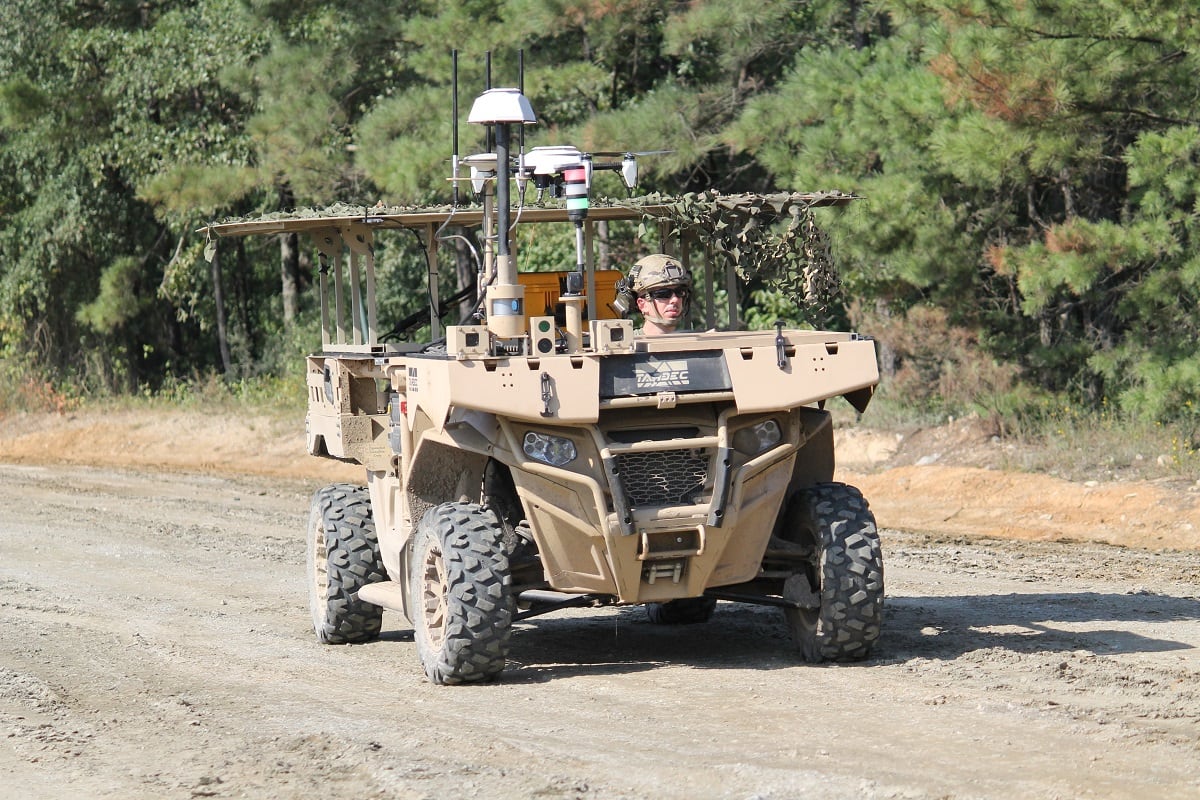
What were the takeaways?
Over the course of three days, the Army ran a structured evaluation of the systems, followed by a VIP day and a seperate day where each participant had one and half hours to show off whatever they wanted, including speed, off-road capabilities or stealth, Mills said.
Mills said the Army learned that it might make sense to mandate a single radio solution because all of the platforms at the demonstration used different communications links, which required a level of deconfliction.
RELATED
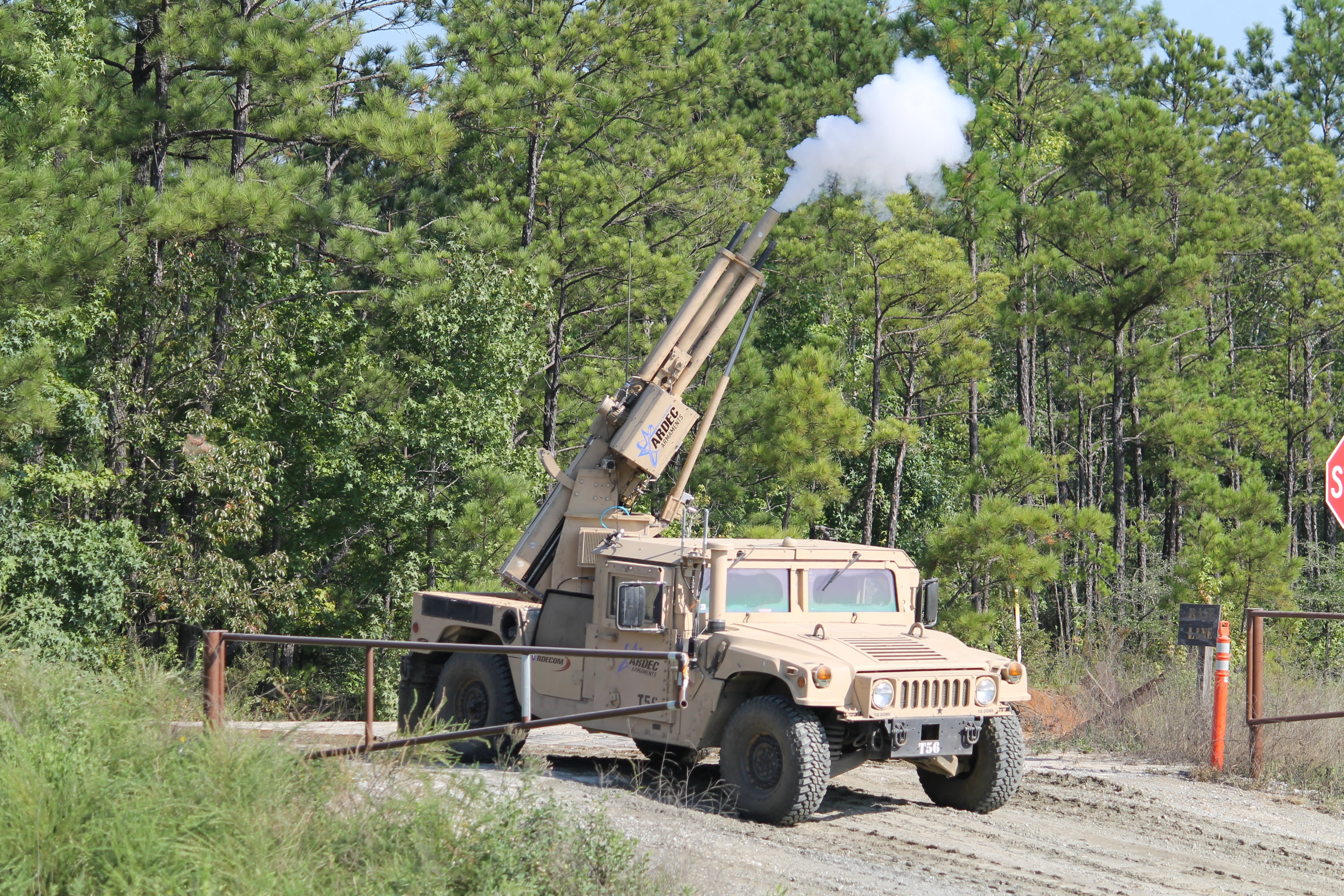
Some of the mobility performance shown during the demonstration will likely help the service articulate the base platform mobility requirements, Mills noted.
One factor that may play into the service’s plans is that none of the vehicles at the demonstration fit in the medium class.
“That might also shape the strategy moving forward,” Mills said, because the timeline for such a platform is very short at the moment — the winning vendor would have 11 months after contract award to supply the Army with prototypes for safety testing, “which doesn’t give a ton of time for our contractor, that doesn’t have a mature system already, to work out the kinks and build something.”
Because of the short notice of the demonstration, industry didn’t have much time to put together platforms. “Basically, it’s what folks had; be it through another government effort or through their own internal development,” Mills said.
Jen Judson is an award-winning journalist covering land warfare for Defense News. She has also worked for Politico and Inside Defense. She holds a Master of Science degree in journalism from Boston University and a Bachelor of Arts degree from Kenyon College.
